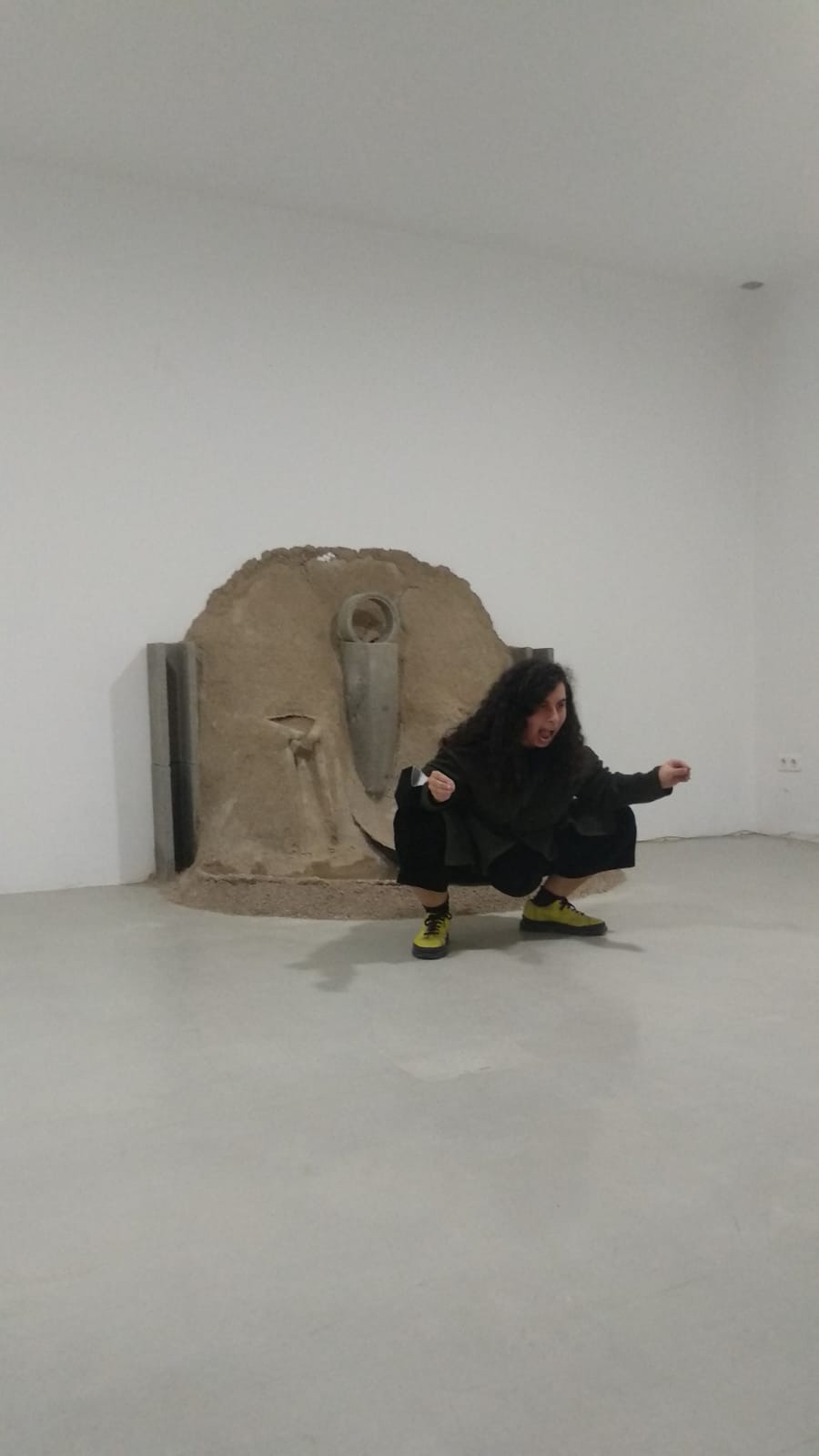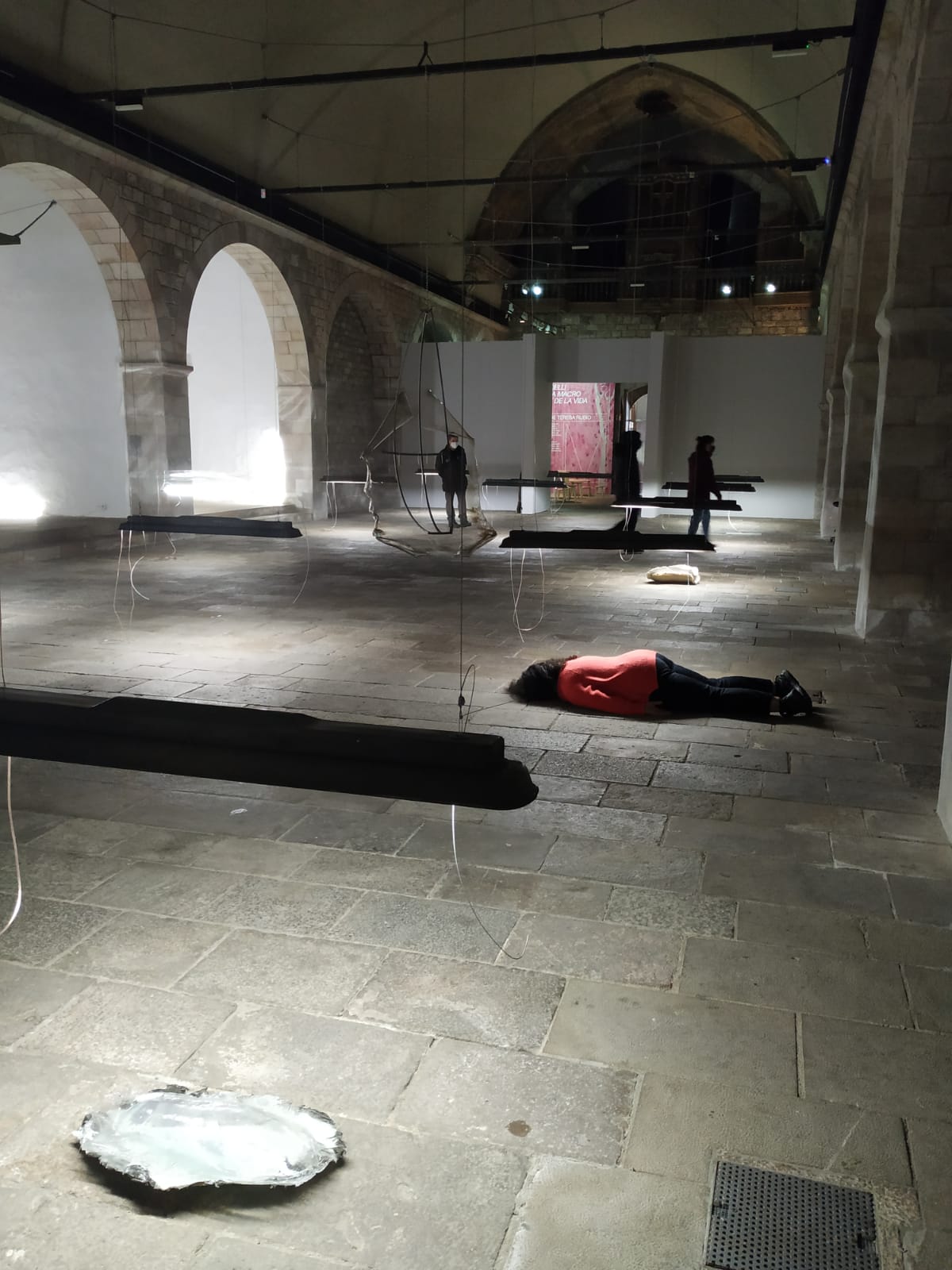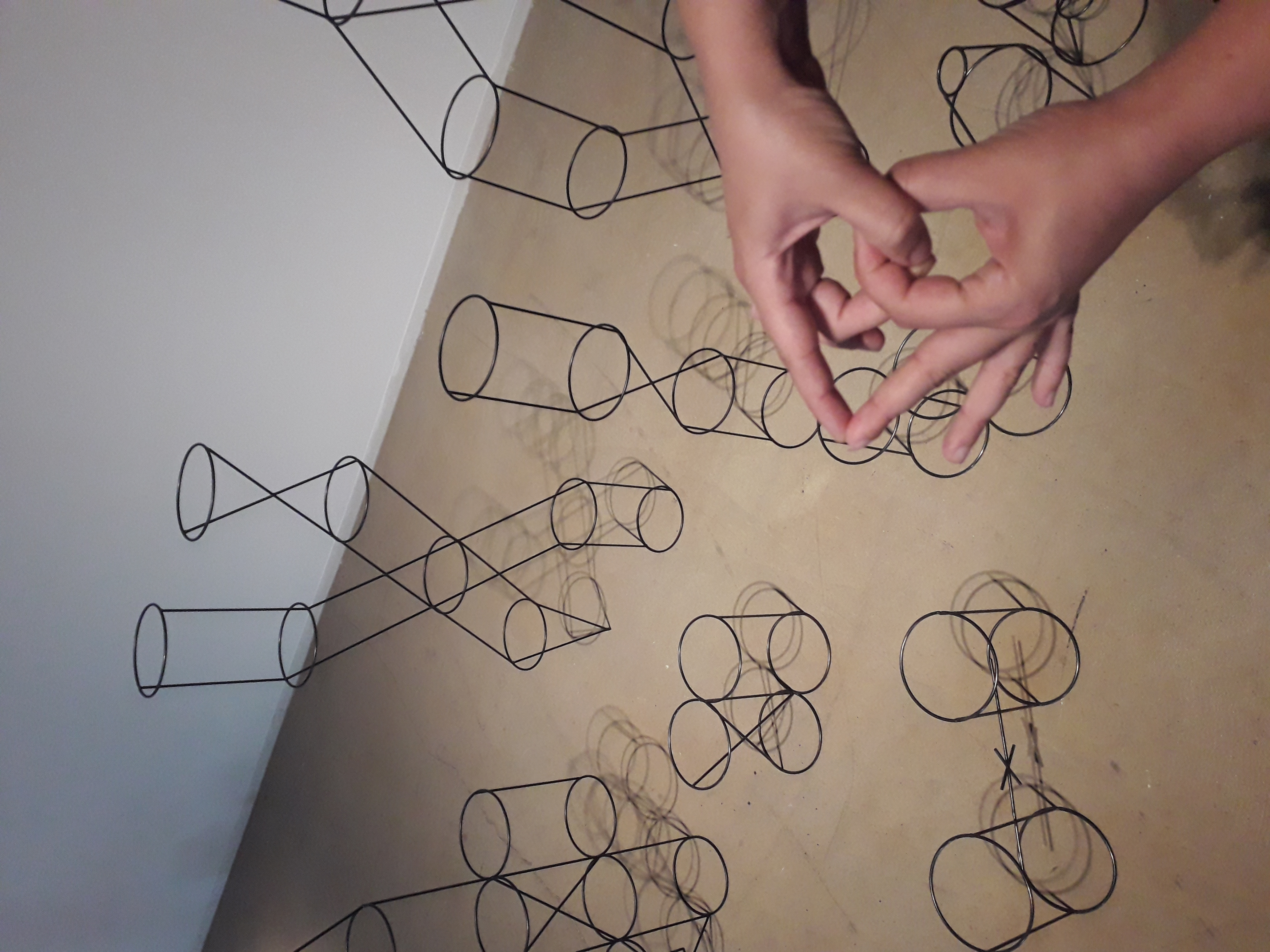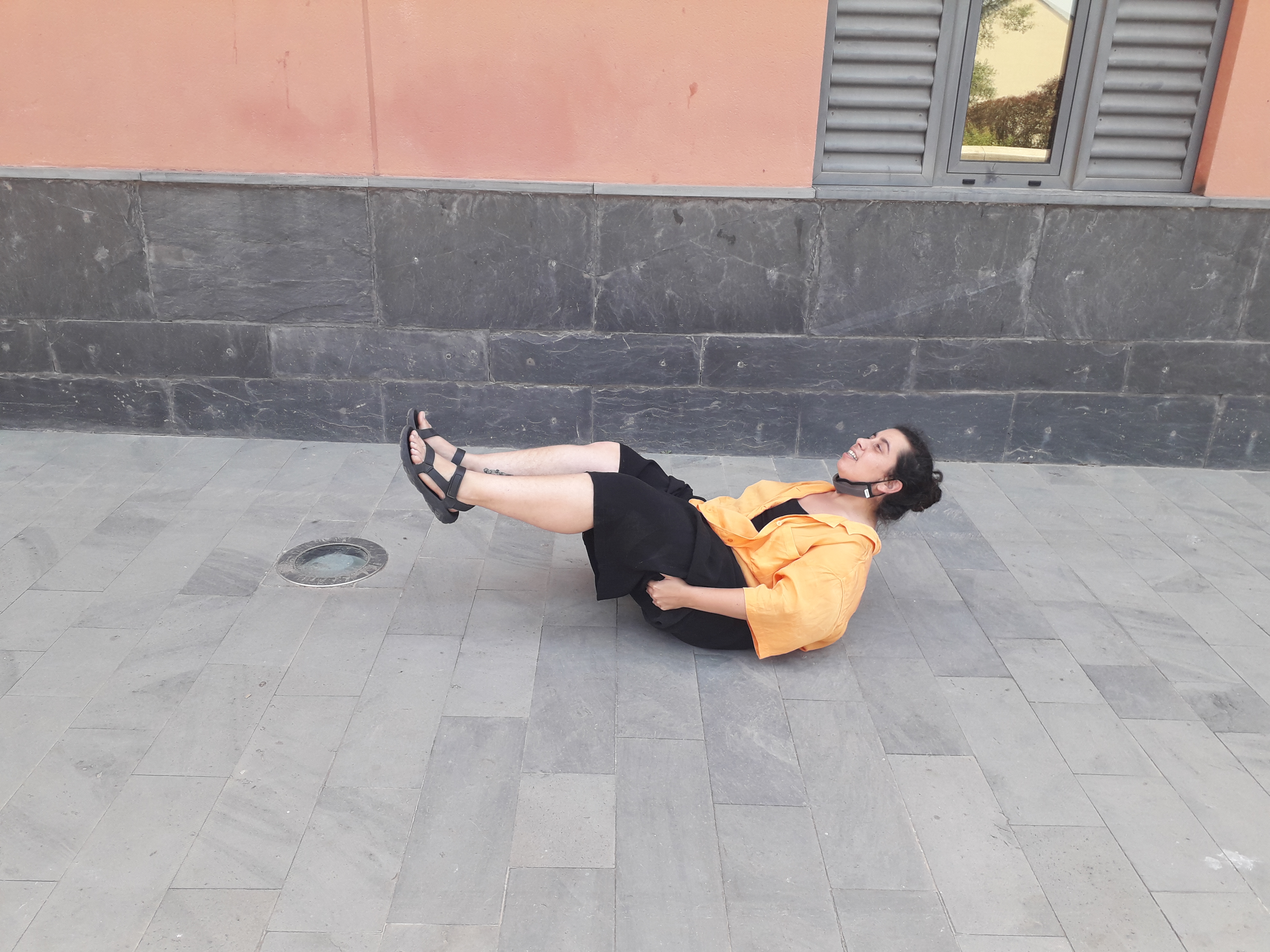Contacte
Arxiu
Cv
^
^
Pa
Disseny Gràfic
BIO
(cat) FER D’OBRA:
Durant el renaixement hi va haver un pintor de quí no recordo el nom, que es va dedicar a pintar quadres de suposades parets de galeries d'art, on apareixen obres de reconeguts artistes al costat d'obres seves, mobilitzat segurament per la seva necessitat de posar-se dins de la història de l'art. La seva extrema voluntat de formar part d’alguna cosa, feia alhora visible el fet que no en formava part, i la dificultat de que això acabès succeint.
Fer d’obra recull diverses accions deslocalitzades i no convingudes en forma d’imitacions corporals d’obres d’art d’artistes contemporànies que es mostren en espais expositius. Inicialment, sorgeix com una tàctica de visibilitat. Una intrusió que s’imposa sobre d’alguna cosa amb la finalitat, primer de relacionar-s’hi, però tambè d’aprofitar-se de la seva capacitat d’apareixer.
Poc a poc, es va convertint en un extrany arxiu de còpies o imitacions corporals d’obres d’altres. Quasi convertint-se en un fons d’una galeria precaria i bastant desconcertant, en que en comtes d’obres, trobem un cos que es dedica a intentar imitar una obra que va veure en algun lloc. La imitació es torna complexa, degut a la diversitat formal i la naturalesa dels materials que componen les obres. De manera que el procés d’imitació es torna un procés de traducció que em força a ser conscient de la meva falsedat, de la meva condició de copia o de altre cosa que no es una obra. Per tant, una traducció fallida, que més que ocupar el lloc de l’obra, hi dialoga.
(Eng) DO WORK:
During the renaissance there was a painter whose name I don't remember, who dedicated his life to painting supposed art gallerie walls, where works by renowned artists appear next to his own works. Surely hi was mobilized by his need to place himself in the art history. His extreme desire to be part of something made visible at the same time the fact that he was not part of it, and the difficulty of that happening.
DO WORK collects various delocalized and non-agreed actions bodily imitations of art works by contemporary artists that are shown in exhibition spaces. At first, this gesture emerges as a visibility tactic. An intrusion that is imposed on something with the purpose, to take advantage of its ability to appear.
Little by little, it is becoming a strange archive of copies or corporal imitations of other people's works. Becoming the warehouse of a precarious and disconcerting gallery, in which, among art works, we find a body that is trying to imitate a them. Imitation becomes complex, due to the formal diversity and the nature of the materials that make up the works. So the imitation gesture becomes a translation process that forces me to be aware of my falsity, of my condition as a copy or something else that is not an art work. A failed translation, which does not take the place of the work, but dialogues with it and amplificate the complexity.





Marc Vives
Monica Planes
Lucia C. Pino
Lluc Banyos
Mónica Planes
Violeta Mayoral
Itziar Okariz
Lucia C. Pino